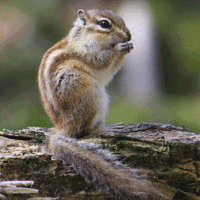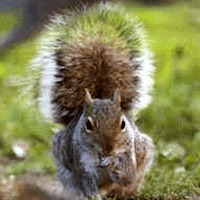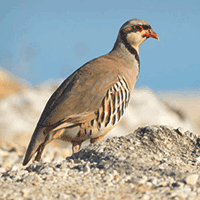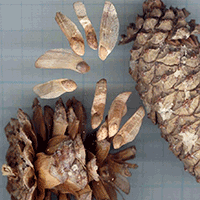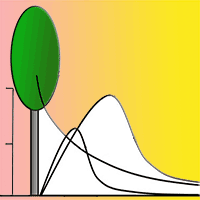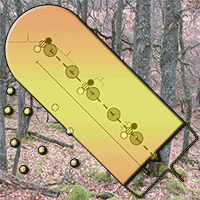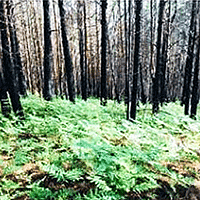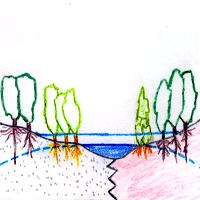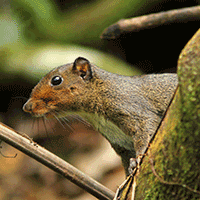
The effect of seed size on seed fate in a subtropical forest, southwest of China
iForest - Biogeosciences and Forestry, Volume 9, Issue 4, Pages 652-657 (2016)
doi: https://doi.org/10.3832/ifor1852-008
Published: Apr 04, 2016 - Copyright © 2016 SISEF
Research Articles
Abstract
Scatter-hoarding rodents acting both as seed predators and dispersers usually play an important role in seed dispersal of many plant species. Seed size is thought to essentially affect rodent scatter-hoarding processes. However, studies to date have frequently shown many controversial results regarding the effect of seed size on rodent foraging. In this study, we explored how seed size affects scatter-hoarding rodent foraging preferences in order to identify the possible reasons underlying the conflicting results reported in the scientific literature. We surveyed rodent seed predation and dispersal of five common tree species in a natural subtropical forest located in southwestern China along two seasons which were different in both seed abundances and rodent communities. Our results showed that a similar effect of seed size on rodent scatter-hoarding behavior existed in both seasons, although the seeds in spring were harvested more quickly than in autumn. Larger seeds of the small-seeded species (Castanopsis wattii, Lithocarpus hancei, Machilns yunnanensis and Lithocarpus pachyphyllus) were harvested, removed, and finally cached by the rodents more frequently. For the largest-seeded species (Lithocarpus xylocarpus), seeds with smaller size were preferred during the rodent scatter-hoarding processes. Our findings support the hypothesis that scatter-hoarding rodents preferably feed on large seeds at early stage of seed dispersal, but only up to a certain threshold of seed size.
Keywords
Authors’ Info
Authors’ address
Bo Wang
Center for Integrative Conservation, Xishuangbanna Tropical Botanical Garden, Chinese Academy of Sciences, Mengla, Yunnan province 666303 (China)
Corresponding author
Paper Info
Citation
Lang Z, Wang B (2016). The effect of seed size on seed fate in a subtropical forest, southwest of China. iForest 9: 652-657. - doi: 10.3832/ifor1852-008
Academic Editor
Massimo Faccoli
Paper history
Received: Sep 01, 2015
Accepted: Dec 07, 2015
First online: Apr 04, 2016
Publication Date: Aug 09, 2016
Publication Time: 3.97 months
Copyright Information
© SISEF - The Italian Society of Silviculture and Forest Ecology 2016
Open Access
This article is distributed under the terms of the Creative Commons Attribution-Non Commercial 4.0 International (https://creativecommons.org/licenses/by-nc/4.0/), which permits unrestricted use, distribution, and reproduction in any medium, provided you give appropriate credit to the original author(s) and the source, provide a link to the Creative Commons license, and indicate if changes were made.
Web Metrics
Breakdown by View Type
Article Usage
Total Article Views: 49650
(from publication date up to now)
Breakdown by View Type
HTML Page Views: 41268
Abstract Page Views: 2757
PDF Downloads: 4257
Citation/Reference Downloads: 51
XML Downloads: 1317
Web Metrics
Days since publication: 3541
Overall contacts: 49650
Avg. contacts per week: 98.15
Citation Metrics
Article Citations
Article citations are based on data periodically collected from the Clarivate Web of Science web site
(last update: Mar 2025)
Total number of cites (since 2016): 9
Average cites per year: 0.90
Publication Metrics
by Dimensions ©
Articles citing this article
List of the papers citing this article based on CrossRef Cited-by.
References
The role of seed size in dispersal by a scatterhoarding rodent. In: “Seed Dispersal and Frugivory: Ecology, Evolution and Conservation” (Levey D, Silva WR, Galetti M eds). CABI publishing, Wallingford, UK, pp. 209-225.
Online | Gscholar

